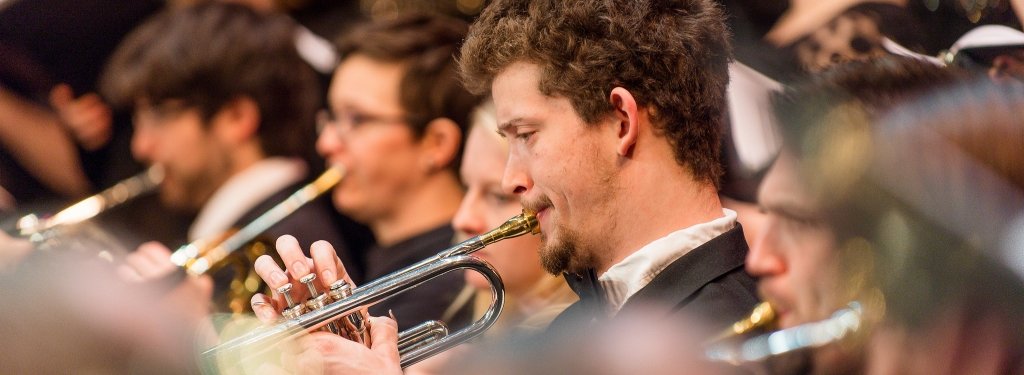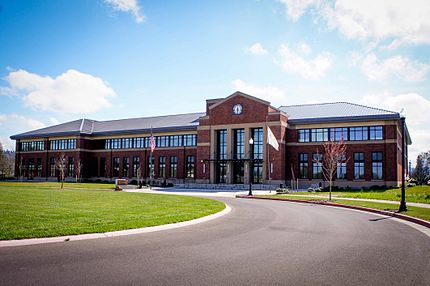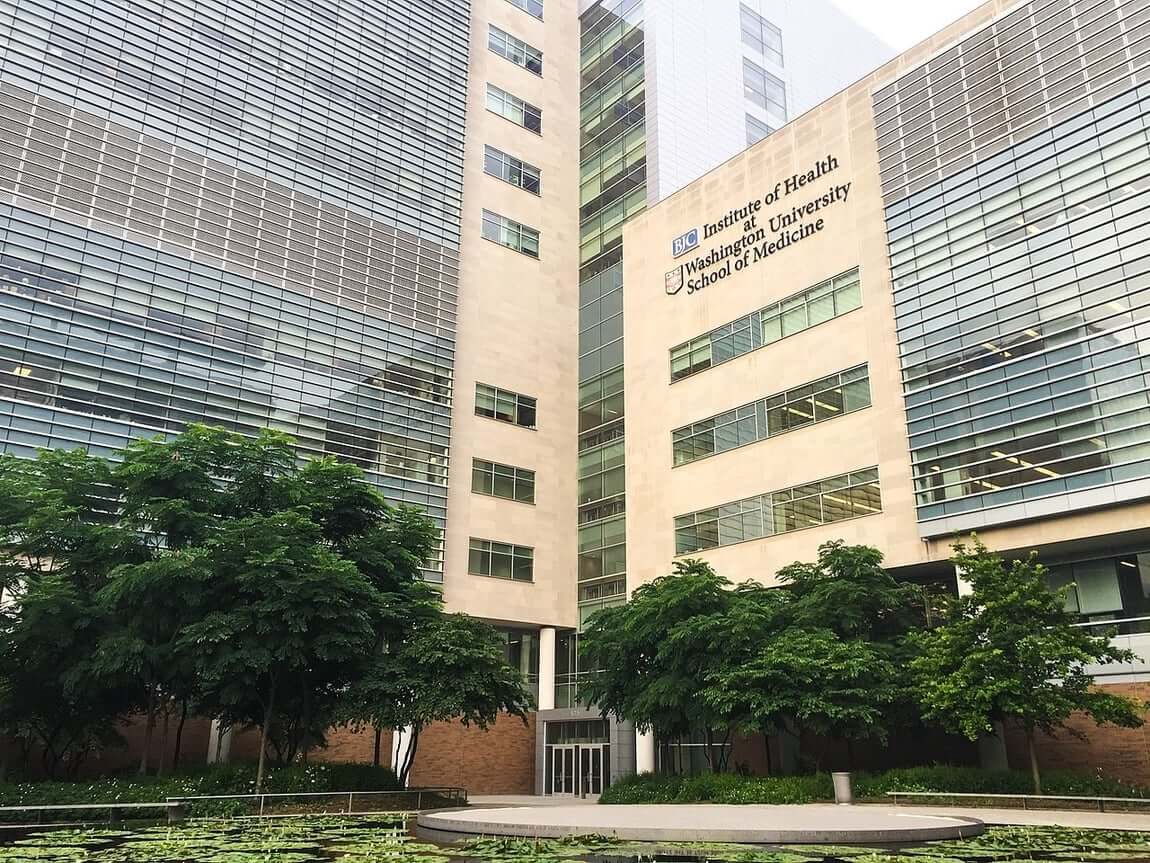Last Updated on December 20, 2022
Medical school has earned a reputation for being competitive and expensive. Applicants must demonstrate strong academic performance and earn competitive MCAT test scores. Additionally, many prospective medical students strive to attend prestigious universities, which further drives competition.
Are you passionate about pursuing a career in medicine in order to fulfill your life-long dream of becoming a medical doctor? Are you worried you might not be getting the right information about that? You need not be worried anymore or confused about it as the article below brings you the latest and trusted information on best medical schools in pacific northwest.
Right here on infolearners, you are privy to a litany of relevant information on best medical schools in the world, best medical schools in washington, pacific northwest university of health sciences college of osteopathic medicine, medical schools in oregon, and so much more. Take out time to visit our catalog for more information on similar topics.
10 Tips on Getting Into Med School

Medical schools are highly competitive. The national acceptance rate is 43 percent, according to data compiled by the Association of American Medical Colleges. Use these top 10 tips from doctors and medical students to help you prepare for your pre-health profession.
1. Get Some Medical Experience on Your Résumé
“This is an unwritten rule that everyone does and nobody ever told me until I was several years into my training,” says Dr. Carlson. “If you want to go to a particular school, find a way to have one of your mentors or advisors reach out to the admissions committee on your behalf.”
Job shadow with doctors and other medical professionals. Admissions committees don’t expect applicants to have real experience actually treating patients. After all, you’re not a doctor yet. But they do want to know that you’ve spent time getting to know what your future job would be like. Job shadowing is a great way to get some medical experience but there are other non-shadowing opportunities that may be available to you.
“Med school admissions committees want students to have realistic expectations for what a career in medicine will be like. says Dr. Sarah Carlson, a vascular surgery resident at Dartmouth Hitchcock Medical Center, who has also served on a medical school admissions committee. As an undergraduate, she volunteered to file x-rays at the local hospital, then parlayed that into an opportunity to talk with the radiologist. He explained both how to read x-ray films, and why he chose his profession. “It’s those types of interactions that are important to have under your belt,” she says. “Quite frankly, medicine isn’t for everyone, so it’s best if you do some soul-searching and spend some time with the people who have the job you want. Most doctors are happy to sit down with students who are considering a career in medicine.”
Other ways to get medical experience include becoming a Certified Nursing Assistant (CNA), a volunteer emergency medical technician (EMT), or as a hospital scribe doing data entry. Some applicants are able to gain clinical experience by helping to care for family members.
2. Do Research Projects

Demonstrate your hands-on science knowledge. “Undergraduate research experience really shines through on medical school applications. Most medical schools want students who are interested in research, and the best way to show that interest is to come in having already gotten your feet wet” says Dr. Carlson. She did pipetting and ran assays for Dr. Pushpa Murthy’s lab at Michigan Technological University. It was a small part of the research, but she conveyed the overall impact. “I had to explain at my interviews that the larger scope of the research was about inositol phosphate metabolism.”
Medical student Carly Joseph did long-term research in engineered biomaterials. “Sticking with it gave me time to learn how to think critically and ignited my passion for science,” she says. “I started off simply learning about biomaterials from older students in the lab, then gradually worked up to doing my own experiments and eventually presenting at conferences.” By choosing to make research a main priority each semester she was able to form close relationships with faculty mentors and accomplish more during undergrad than she ever imagined.
In addition to college-based research programs, you can investigate summer offerings, including those through the National Science Foundation Research Experience for Undergraduates program or check out the AAMC database for summer undergrad research programs
3. Put in Time Serving Others
Dr. Carlson volunteered with the Big Brothers-Big Sisters organization. So did Joseph. Rake leaves, build an accessibility ramp, clean the beach, walk a dog. There are lots of non-clinical options for volunteering that demonstrate your willingness to pay it forward and give back.
“They have many different programs and services.” Joseph, accepted into Central Michigan University’s College of Medicine, was part of the Forever Friends program, matched with an elderly woman she visited a few times each month. “I ‘ve formed a great friendship with her, and hopefully, helped alleviate some loneliness. It ‘s a win-win!”
“Doctors are generally pretty altruistic people, and med schools want to see that you care about your community or have some drive to contribute to the greater good,” says Dr. Carlson. “Community service comes in many forms, and really anything qualifies, from trash cleanup and mentorship programs to working the concession stand at a fund-raiser for a charity—anything that requires some unpaid time for a good cause.”
Ask your pre-health professions advisor about volunteering opportunities on campus or in your community, which could include helping at local food banks or blood drives, local shelters for the homeless or those dealing with domestic violence. You could tutor, deliver good companionship and Meals on Wheels, or walk the dogs at a local animal shelter. Take an alternative spring break and work with Habitat for Humanity or on developing clean water sources for Third World countries. Check with your school for a list of community and global partners it works with who can use your time and talents. The mentors you develop will come in handy when it’s time to gather recommendation letters—most schools ask for at least three—and the friendships you develop will last a lifetime.
4. Choose a Major You Will Excel In
Grades aren’t everything, but they’re extremely important. Choose a field of study that will yield a competitive GPA (grade point average). The recommended GPA for medical school applicants is 3.7 for MDs (medical doctors), 3.5 for DOs (doctors of osteopathy), and 3.4 for NDs (Doctor of Naturopathic). While many students who are planning careers in medicine decide to major in biology, Dr. Carlson earned her bachelor’s in chemistry. Many of her colleagues majored in even more unexpected fields, including engineering, English, music, and classics.
“It ‘s OK if you ‘re not on the pre-med track right away when you start college; pursue experiences that genuinely interest you and rely on guidance from your faculty mentors to navigate your path”Carly Joseph
There is no such thing as a pre-med major, says pre-health professions advisor Nicole Seigneurie, who works with students preparing for medical careers at Michigan Technological University. “There are so many different programs students can apply to.” You will still need to do well in both your cumulative and your science GPA, classes like biology, physics, chemistry, and math, that are required for medical school admission. If you are struggling in any classes, get help right away.
During her fourth year, Joseph had to take many of the medical school prerequisite classes that were not part of her engineering curriculum and build a Medical College Admission Test (MCAT) study plan into her schedule.
5. Apply to Multiple Schools

Improve your odds by not placing all your hopes on one school. Do individual research on each school, says Seigneurie; application requirements can vary from school to school and from year-to-year.
She also notes that you can reach out to admission committees with specific questions about the program and expectations. And, she says, don’t be bummed if at first you don’t succeed. Try again. “If you don ‘t get accepted into the school of your dreams, it ‘s OK! Schools have many applicants and can ‘t take everyone,” says McKenzie, who was accepted into the Michigan State University College of Human Medicine. “My dad, who has been a family physician for 29 years, often tells me, “An MD is an MD, it doesn ‘t matter where you go to school.”
“Don’t take it personally when you get some rejections—they happen at every stage of the game. If you cast a wide net, you’ll increase your likelihood of getting an acceptance.”Dr. Carlson
Other ways to get noticed among the hundreds or even thousands of medical school applications submitted each year: send supplemental materials beyond your application. For example, “if you’ve published a paper, consider sending a copy of the publication with a handwritten note to the director of admissions, indicating you really hope to be considered for acceptance,” she says.
6. Study Early and Often for the Medical College Admission Test, or MCAT
MCAT scores range from 472-528. Accepted medical students average around 508. Recommended study time: 300-350 hours.
Take a course and buy books and study on your own. Find the method that works for you. Take practice tests many times and don’t let your practice scores spook you, says McKenzie. “I used the Kaplan book series, and studied by reading, highlighting, and taking notes. The real MCAT was not as hard as the Kaplan test, in my opinion.” The pre-health professions advisor can help you find the resources you need.
You can also join a pre-health professions club or association at your school, including Alpha Epsilon Delta, the national honor society for health pre-professionals. Members help each other get ready for tests, along with hosting speakers and events to help gain knowledge and experience.
7. Learn Another Language
“I speak Spanish almost every day at work,” says Dr. Carlson. “It ‘s what I use the most from my premed education.” Joseph spent a semester in Chile. “Focusing on language, culture, and people challenged me in a me in ways that technical classes couldn ‘t and was critical in my preparation for medical school. If you ‘re thinking about studying abroad, do it. Communication and understanding different cultures are crucial skills for anyone entering the medical field, and medical schools look for applicants who make the effort to broaden their horizons culturally.”
Medical volunteer programs abroad are another option to gain both life and health-care related experiences. Students are placed in hospitals and clinics in both rural and urban settings where staff is inadequate. Work, with professional guidance, can include giving vaccinations and other tasks interacting directly with patients, as well as helping to make facilities cleaner and more accessible. Programs are normally for people aged 18 and older
8. Don’t Skimp on Extracurricular Activities

Show that you’re interested in other things besides schoolwork. Dr. Carlson says having outside interests makes you stand out (she plays violin in an orchestra). “It’s OK to indicate some of these personal interests on your med school applications—they give the interviewers something to relate to you with,” she says. “I interviewed one applicant who only got a C in biochemistry, but he wrote lots of letters to the admissions committee highlighting his other strengths. We accepted him, and he turned out to be a star.”
“Medical schools like to see commitment in their applicants, be it to sports, work, or extracurricular activities,” says McKenzie. “It ‘s easier to not join clubs and just do homework and relax, but devoting time now to extracurricular commitments is worth it in the long run. These experiences also give you good opportunities to get to know people who can write the letters of recommendation.”
Joseph says to choose activities based on what works best for you. Aim for quality rather than quantity.
“There ‘s a lot of pressure to have as many leadership roles as possible and be involved in tons of student organizations. For me though, having a few deep and lasting experiences was the way to go. I chose to invest my time in research, improving my Spanish, and volunteering,” she says.
9. Be Polite and Be Yourself at Interviews
Research the schools you’re interested in and look at mission statements, so you know something about the institution that you can share at the interview. Practice answering interview questions. When you arrive, be courteous to everyone you meet at the interview, including the receptionist.
“Schools are interested in learning what kind of student and person you are,” says McKenzie. Schools invest in students and are looking for a good fit.
If you need help with effective body language, knowing how to dress professionally or for other tips, check out your school’s Career Services office, which may offer mock interview opportunities and other techniques to help you present your best self.
10. Be Ready to Explain Why You Want to be a Doctor
Avoid generic answers like “I want to help people.” There’s no one right answer. Be specific. Tell your story.
Best Medical Schools In Pacific Northwest
Pacific Northwest University of Health Sciences (Spokane, WA)
Pacific Northwest University of Health Sciences (PNWU) is a private medical school founded in 2005 and located in Yakima, Washington. In the Pacific Northwest, the university of health sciences was the first new medical school to open after sixty years.
PNWU consists of the College of Osteopathic Medicine and grants the Doctor of Osteopathic Medicine (D.O.) degree. It is accredited on Osteopathic College Accreditation by the American Osteopathic Association’s Commission. The Doctor of Osteopathic Medicine (DO) degree is a four-year program. Years 1 and 2 of the DO program focus mainly on classroom-based learning, which consists primarily of the basic sciences.
Medical students in years 3 and 4 of the DO program get involved in clinical rotations in off-site communities. There are currently 18 sites for clinical rotations over the five-state region of Idaho, Alaska, Montana, Washington, and Oregon. Students are required to go as far as many other parts of the Northwestern United States to receive hands-on clinical training. These sites are located in about 15 states including Alaska; Blackfoot, Fairbanks, Idaho; and Portland, Oregon.
The curriculum combines classroom-based learning, and foundation sciences, with clinical rotations at affiliated hospitals throughout the Pacific Northwest including a four-week rotation in rural family medicine, whereby students are trained to tackle medical problems faced by rural populations. Preclinical courses include Scientific Foundations of Medicine and Osteopathic Principles and Practice (OPP).
98 and 100 % of graduates secure a residency match every year in internal medicine, general practice, emergency medicine, and pediatrics. The average passage rate of the comprehensive Osteopathic Medical Licensing Examination (COMLEX) exam by PNWU students is around 92%. PNWUHS proves that even the newest med schools can train high-quality doctors and health care professionals in the medical field. Over 4,455 applications were received in 2022 and only 7% of applicants were admitted.

PNWUHS faculty is made up of nationally recognized experts in different specialties. Mark Baldwin, D.O, the former Chief of Internal Medicine at Pacific Northwest University of Health Sciences, brought decades of experience into the classroom learning and clinical training of young osteopaths. Another outstanding faculty member is Ruth Bishop, Assistant Professor of Family Medicine. He earned a Master’s in Public Health and served on the Industrial Insurance Medical Advisory Committee while practiced general surgery for eight years. He is currently a lecturer at Pacific Northwest.
Best medical schools in washington
Washington offers a plethora of outdoor activities, and a large population, mostly centered around the Seattle area, allowing you access to a large patient population. There are also many smaller cities and towns in Washington for those students interested in rural medicine. Washington was one of the first US states to legalize medical and recreational marijuana and would be the ideal location for students hoping to learn more about this emerging area of healthcare.

1. University of Washington School of Medicine
1959 NE Pacific Street
Seattle, WA 98195
Campus location(s): Seattle
The University of Washington School of Medicine is a 4-year MD-granting program that was founded in 1946. The University of Washington School of Medicine is the only 5-state medical school in the U.S. with their unique WWAMI program (Washington, Wyoming, Alaska, Montana and Idaho). WWAMI allows students to complete their first year in their home state, followed by year two in either Seattle or Spokane. UW School of Medicine provides students many opportunities to explore their interests through one of their four rural programs or by selecting a pathway that works with a vulnerable population. Pathways are available with underserved populations, Indian Health, Global Health, Hispanic Health, and LGBTQ health. UW is also known for their research and gives students the opportunity to pursue research if they wish. The service-learning program also gives students the opportunity to engage in the community and use it as a learning experience
2. Washington State University Elson S. Floyd College of Medicine
412 E Spokane Falls Blvd
Spokane, WA 99202
Campus location(s): Spokane
The Washington State University Elson S. Floyd College of Medicine is a 4-year MD-granting program that welcomed its first class in 2017. The Washington State University Elson S. Floyd College of Medicine is a community-based medical school with a strong commitment to Washington residents. Students receive a personalized education from a mentor who helps to personalize each student’s curriculum. Students also gain clinical experience within their first year. In addition, all students must complete a scholarly project during their four years at Washington State.

3. Pacific Northwest University of Health Sciences College of Osteopathic Medicine
200 University Pkwy
Yakima, WA 98901
Campus location(s): Yakima
The College of Osteopathic Medicine of the Pacific-Northwest is a 4-year DO-granting program. It is the only osteopathic medical school in the state of Oregon, welcoming its first class in 2008. Many students come from within the Pacific Northwest to serve the northwest, but COMP-Northwest also has students from across the country.
Students are exposed to clinical experience in the preclerkship years through longitudinal courses in the curriculum. COMP-Northwest emphasizes an interprofessional curriculum which allows for the engagement of other health professions and prepares you to better utilize interprofessional relationships to care for your patients in the real world. Many students are involved in student organizations and in the community.
Best medical schools in the world
10. University College London
London, England
This prestigious institution has been educating students from as early as 1834, making it one of the oldest medical schools in the world. Like most world universities – apart from those in the United States – students at UCL have the option of either pursuing undergraduate study in medicine and completing a degree in 6 years or undertaking a post-graduate degree in medicine after undergoing separate undergraduate study. This school has multiple departments within the faculty of medicine, including but not limited to: brain sciences, immunology and inflammation, infectious disease, metabolism, digestion and reproduction, and surgery and cancer. UCL Medical School is also home to a number of impressive alumni, including presidents of the Royal College of Physicians, presidents of the Royal College of Surgeons in England and chairs of the General Medical Council.
9. Massachusetts Institute of Technology (MIT)

Cambridge, Massachusetts
Whilst this university itself does not have its own medical school, MIT comes in at 9 on QC’s prestigious list due to its partnership with Harvard University. This alignment between universities allows students to participate in a Health Sciences and Technology Program, which integrates science, medicine and engineering to solve problems in human health. Students also have the opportunity to pursue a dual degree and receive both a MD and PhD. Due to the emphasis on research, most who graduate from MIT pursue careers in biomedical research, rather than becoming physicians.
8. Yale University

New Haven, Connecticut
The first Ivy League school to feature on this list, Yale University is home to one of the most prolific medical schools in the world. Interestingly, this medical school emphasises that students are not required to major in anything health-related as undergraduates, as long as they fulfil the prerequisites for entry into medical school. Yale is also home to a number of other graduate schools and programs and as such, offer students many different dual degree combinations, including an MD and JD, MD and MBA and MD and MDiv – a Master of Divinity. In addition, about 20% of students choose to pursue an MD alongside a PhD. Like many other universities on this list, Yale Medical School alumni are among some of the most prominent on the global medical scene. One distinguished alumnus is Aaron Beck, who is known for his success in the field of psychiatry – one of his most notable achievements being the development of cognitive theory.
7. UCLA

Los Angeles, California
UCLA’s David Geffen School of Medicine is one of the most renowned public medical schools, ranking in at 4th in the US and 7th in the world. The UCLA medical centre, the primary teaching hospital for both those pursuing a degree in medicine and in nursing, offers training in a number of different specialised fields. Students also have the option to pursue multiple different programs and joint degrees, including an MD and PhD, MD and MBA and MD and Masters of Public Affairs.
6. Karolinska Institute

Solna, Sweden
The second European medical school to feature on this list, the Karolinska Institute is the single largest centre of medical academic research in Sweden, responsible for 40% of medical research within the country. Unlike other universities on this list, the Karolinska Institute is one of the cheapest medical schools in the world – it is free for all students living in the EU.
5. Johns Hopkins University

Baltimore, Maryland
Not unlike many of the other medical schools featured on this list, Johns Hopkins Medical School boasts a highly competitive program, admitting only 3.9% of applicants. As such, class sizes at Johns Hopkins are relatively small, often only containing 120 students. Despite the competitive nature of their application, Johns Hopkins fosters a collaborative atmosphere amongst students and faculty. famous alumni include Harvey Williams Cushing – an American neurosurgeon, pathologist and writer who was the first physician to describe Cushing’s disease.
4. Stanford University

Palo Alto, California
Despite being known for its success and excellence in the fields of business and entrepreneurship, Stanford University is also home to one of the most distinguished medical schools in the world. Like others on this list, Stanford offers a variety of dual degrees, including the popular combination of an MD and PhD, in order to facilitate pathways between medicine and research. Similar to Johns Hopkins, the medical program at Stanford is small, with each cohort often only containing between 90 and 100 students. Located in Silicon Valley, students at Stanford Medical School are also able to reap the benefits of cutting-edge technology being at an arm’s reach. Their location also enables greater opportunity for medical research to more easily reach an application stage.
3. University of Cambridge

Cambridge, England
Ranking at third, Cambridge Medical School is the oldest institution on this list, being founded back in 1540. As a European Institution, Cambridge allows its students to study medicine at an undergraduate level and graduate as a doctor in just 6 years. This university particularly excels in the field of biomedical science – its most notable success being the discovery of DNA in 1953. Notable alumni include: Ieuan Hughes (world famous paediatrician) and Barbara Sahakian (globally recognised clinical psychologist).
2. University of Oxford

Oxford, England
Coming in just one place ahead of its UK-based rival, University of Oxford is often considered to be home to the best medical institution outside the United States. Similar to its European counterparts, students are able to begin their studies of medicine straightaway. Oxford also offers an accelerated program for those who have already completed their undergraduate degree and are ready to pursue their medical studies at a graduate level. Oxford alumni can be found in a number of different fields, including but not limited to academia, research, and in private practices.
1. Harvard University

Cambridge, Massachusetts
At number one, Harvard Medical School is considered by many as the best in the world. This university is renowned for its distinguished faculty and premium teaching hospitals, including Massachusetts General and Boston Children’s Hospital. Harvard is also home to a number of successful alumni, including Jill Stein, acclaimed physician and Green Party nominee for the Presidency in both 2012 and 2016, Sidney Farber (noted oncologist/pathologist who is considered the ‘father of chemotherapy’) and Helen B Taussig (pioneer of paediatric cardiology and co-developer of the Blalock-Thomas-Taussig shunt).

